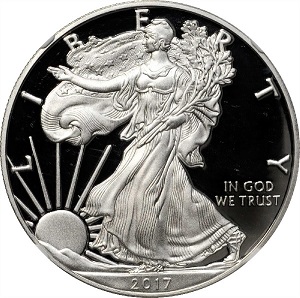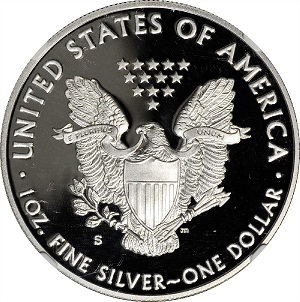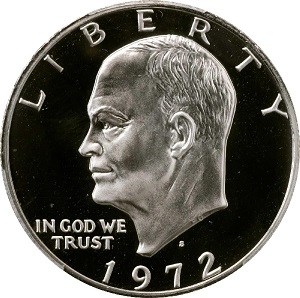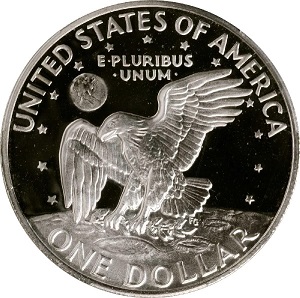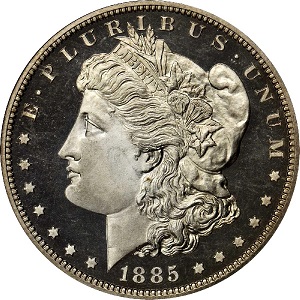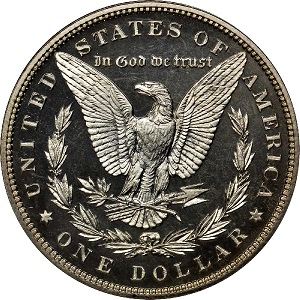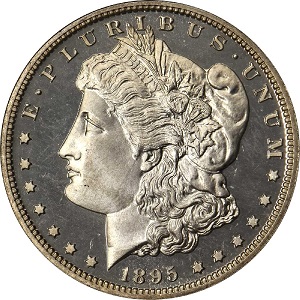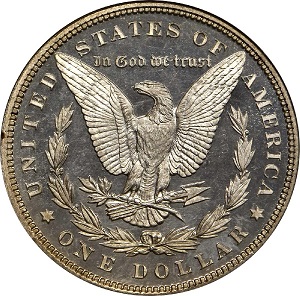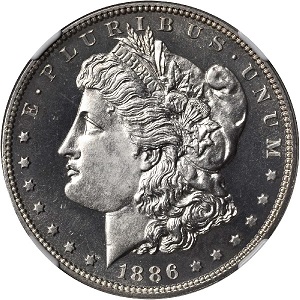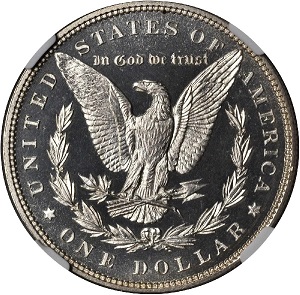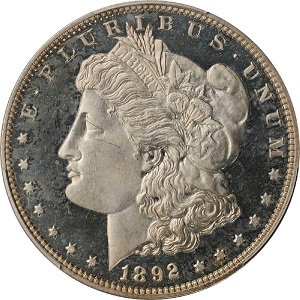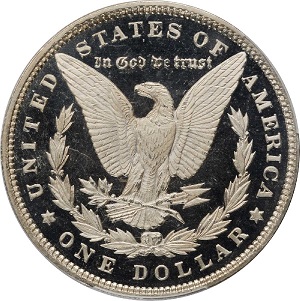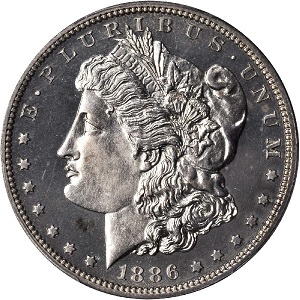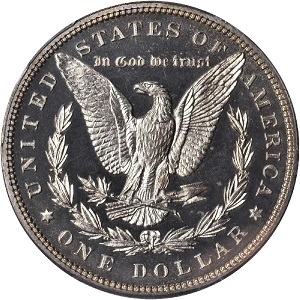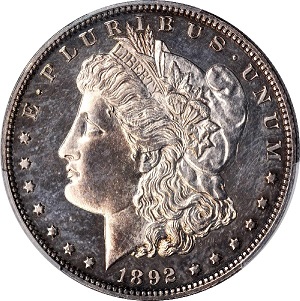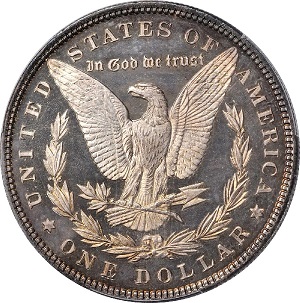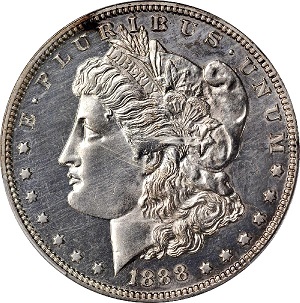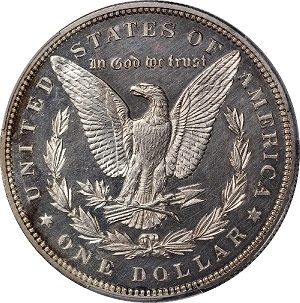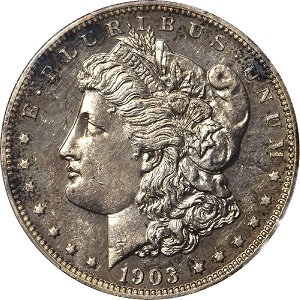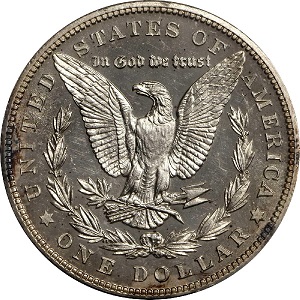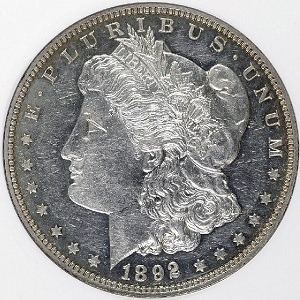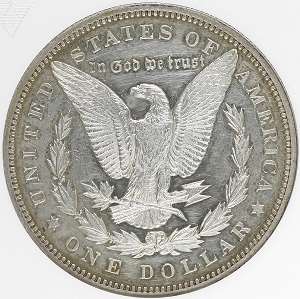Grading Proof Coins
Proof graded coins occupy a realm all to themselves in the field of numismatics. Many of you probably already have a good idea what a Proof coin is.
Before proceeding, let's clearly define what is a Proof coin. This is somewhat of a long-winded explanation, but it'll serve us well:
A Proof coin is produced from a dedicated manufacturing process resulting in a coin with superior, mirror-like surfaces. It is made expressly for collectors and is not intended for general circulation. The process utilizes specialized planchets (sometimes called blanks) and polished, smoothed dies, and usually involves multiple strikes to accentuate the coin's principal design elements (a.k.a. devices). A newly struck Proof coin is handled and packaged carefully at the Mint to reduce the possibility of contact marks, hairlines, or other blemishes.
The United States Mint produced this video briefly showing how Proof coins are manufactured. We sure have come a long way since the horse-powered machinery of the early Mint!
There are 11 Proof grades on the ANA scale, ranging from PR-60 to PR-70. The abbreviation PF or PRF is frequently used rather than PR.
Grading Proof coins is similar to grading Mint State coins in that a process called market grading is employed to determine a coin’s numerical grade on the ANA scale.
In market grading, several attributes of a coin that are of importance to collectors (e.g., contact marks) are scrutinized to get a feel for how much the coin would be worth in the marketplace. A numerical grade is then assigned to the coin to match its estimated worth as shown in industry pricing guides for that grade.
Example: Consider a Proof $10 Indian Head eagle. After evaluating key aspects of the coin and how they come together to produce an overall impression, to the market grading tech the coin looks like it could sell today for PF-63 money (as listed in, say, The Greysheet), so it would be assigned a grade of PF-63.
For sure, market grading is trickier and more opinionated than technical grading, which is used to grade circulated coins in Extremely Fine and lower. About Uncirculated coins are generally undergo market grading because they are so close to being Mint State.
Rather than repeat everything about market grading here, we’ll send you over to the section on Mint State grading where you can learn more. Additionally, the ANA has some videos explaining in detail the differences between technical and market grading.(1)(2)
Market grading of Proof coins in many ways is like that of Mint State coins, but with a few significant exceptions. Here’s how we’ll break it down:
- Primary Attributes of Proof Coin Grading
- Assigning a Numerical Proof Grade
- Qualifiers for Proof Grades
- Proof Descriptions and Photos
Primary Attributes of Proof Coin Grading
There are four primary attributes closely examined during the grading of Proof coins:(3)
- Contact Marks
- Hairlines
- Fields
- Eye Appeal
Unlike Mint State coins, strike is not one of the primary aspects scrutinized in the grading of Proof coins. That’s because in the production of Proofs, the coin is struck multiple times under high pressure to ensure sharpness in the coin’s features. Graders typically do not encounter many weakly struck Proof coins.(4)
As was the case with Mint State coins, there is an infinite amount of variation within each grading attribute of Proof coins. Let’s scratch the surface on these attributes (sorry, terrible pun to open this topic)...

Contact Marks
Proof coins typically have always been handled with greater care, but that does not mean contact marks, (a.k.a. bag marks) are not an issue. They are seen with less frequency compared to Mint State coins, but when they do occur, they may appear as small nicks, scratches, or other imperfections created when tossed around with other coins, just as if they were Mint State coins.
Quality control initiatives at the Mint were not as prevalent in centuries past as they have been in the modern era, so it is not difficult to find a classic Proof coin with heavy contact marks.
Of course, it's not just the Mint that can be blamed for contact marks appearing on Proof coins. For the better part of 200 years, more than a few collectors have been guilty of treating Proof coins recklessly.

Hairlines
When it comes to Proof coins, the most common detriment to surface preservation manifests itself in the form of hairlines.
Hairlines are tiny scratches and are usually caused by wiping with a cloth in an effort to “clean” the coin. Without the benefit of being a time travelling mind reader, it is reasonable to assume the cleaning cloth was applied by well-meaning collectors from generations past, when the hobby had not developed to the stage where the cleaning cloth was widely recognized as a "no-no".
The fine lines generated from the friction of the cleaning cloth are visible under magnification and subtract from the grading score. The more hairlines present, the lower the grade. Concentrated hairlines may render a coin with "cloudy" surfaces.
Alternatively, a Proof coin with few to zero hairlines may be a contender to score near the top of the grading scale.
Hairlines appearing as a series of parallel lines may be the result of cabinet friction or album storage.
Although contact marks and hairlines are two distinct types of coin damage, they are both categorized as surface preservation issues.
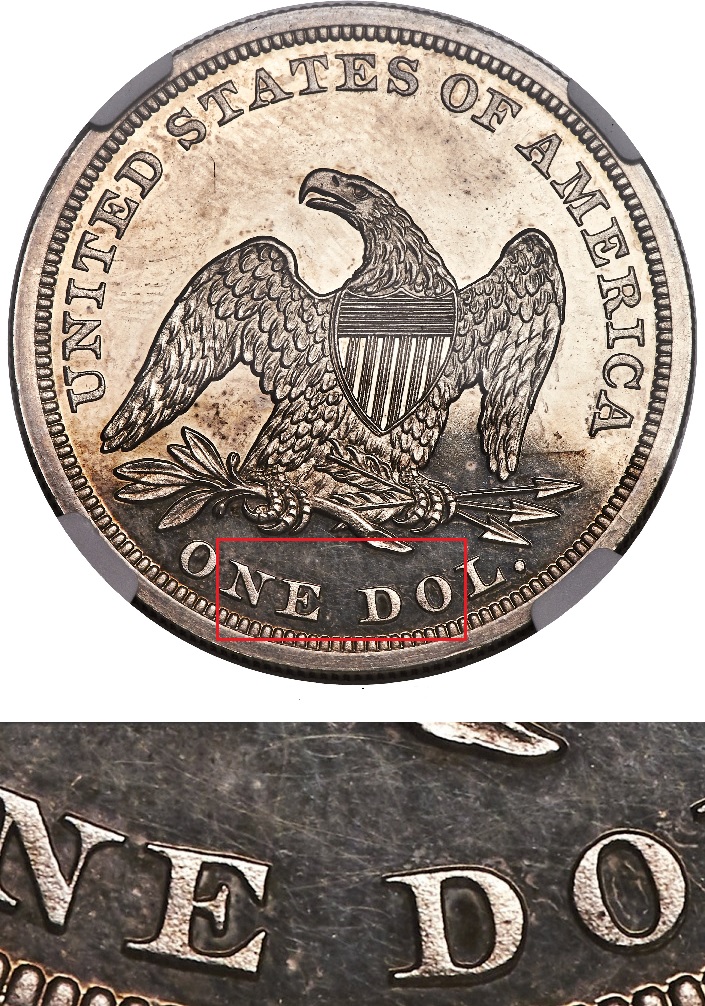
Fields
Fields are defined as the open areas on a coin’s surface, where there is no lettering, portrait, eagle, shield, or other devices. The word "device", when used in a numismatic context, pertains to any raised design element of a coin.
On Proof coins, the fields are intended to display watery-like, mirrored qualities. This is the result of smoothness in the fields imparted by highly polished dies.
Mirrored Proof coins mostly lack the radiant "cartwheel" action observed in lustrous regular business strikes. Smoothness means that the light will reflect off the coin with less of a scattering effect, thus reducing the radiance and luster, but enhancing its reflective qualities.
There are a few deviations from this when the proof manufacturing process was altered at brief intervals during the early 20th century to fabricate Matte Proofs, Satin Proofs, and Sandblast Proofs.(5)
A coin with undisturbed, nicely reflecting mirrored fields has a better chance at rating higher than an example with dull, lifeless fields. Dullness can be caused by field roughness (the usual result of die wear), improper cleaning, undesirable toning, or excessive hairlines.
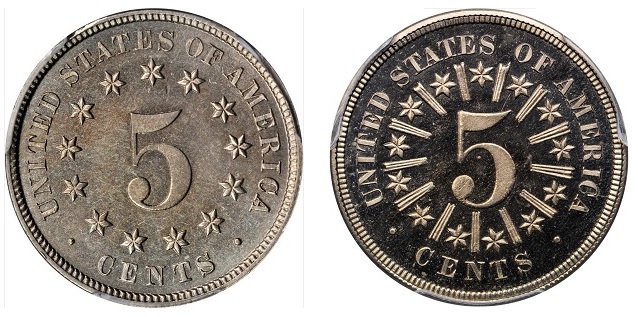
Eye Appeal
The eye appeal attribute is difficult to nail down definitively, but numismatists can generally agree if a particular Proof coin clearly has a net positive eye appeal. The same can be said for negatives as well.
Yes, by now the eye appeal lecture is starting to sound like a broken record, but it's important to mention it every time. (for youngsters unfamiliar with the 'broken record" idiom -- THIS is for you)
Exceptional eye appeal in Proof coins is typically characterized by few distracting marks/hairlines, highly reflective fields, or lively toning with great color. Or perhaps all of these desirable aspects combined.
A coin with truly spectacular eye appeal can far exceed the selling price of the same coin with a “normal” appearance. Industry leaders understood greater specificity was needed in coin grading to address the wide separation of selling prices for coins at or very near the same grade. Just having a numerical grade was no longer good enough.
To that end, several special indicators were developed to further stratify coin quality over a very narrow spectrum (even within a single point on the grading scale). You can learn more about these special indicators in the Stars, “Green Beans”, and “Plus” Grading chapter.

Assigning a Numerical Proof Grade
In the world of market grading Proof coins, much attention is paid to field reflectivity and eye appeal. But when it comes to the bottom line, surface preservation (contact marks, hairlines) reigns supreme in assigning an overall PR-xx grade. We saw the same with Mint State coins.
Just think about the Proof 1865 Seated Liberty dollar pictured above. With just the naked eye, it appears nearly free of major distracting marks and has wonderfully reflective fields. Under magnification, however, the plethora of hairlines becomes evident and spoils any hope of scoring anywhere much beyond PR-61.
How are the various Proof coin grading aspects weighed in the process of assigning a numerical grade? Like everything else in coin grading, there is some ambiguity, but here is a reasonable formulation to contemplate:
- Surface Preservation (i.e., contact marks and hairlines) 50 to 60%
- Fields 20 to 25%
- Eye Appeal 20 to 25%
Of course, there is some wiggle room in these percentages, but more often than not, these weightings are fairly close in determining a Proof coin's numerical grade.
If you've been following the bouncing ball since we started the coin grading discussion, you probably have figured out we're not yet ready to close out the chapter on Proof coins...
Qualifiers for Proof Grades
Now the bouncing ball lands here...
As was the case for a few Mint State coins, a numerical grade for some Proof coins may be suffixed by qualifiers.
A qualifier, in addition to the numerical grade, gives collectors another layer of information about the coin in question, and may well have a bearing on value.
The qualifiers for Proof coins are:
- Color
- Contrast
Color
The color qualifier comes into play only with copper-based coins. Depending on how much of the original red-orange hue remains, the qualifier is designated as RD, RB, and BN.
Much of what was written about color in the Mint State grading section holds true for Proof coins. Rather than repeat all that, how about if we send you over there there by clicking HERE.
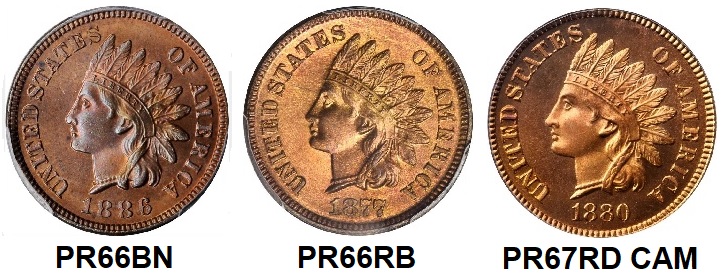
Contrast
A qualifier is applied to a Proof coin's numerical grade when a high level of contrast between the fields and the coin's main devices is observed. This type of contrast is called the Cameo effect.
A Cameo Proof coin has whitish, or "frosted" devices that contrast boldly against well-defined mirrored fields. The frosted look was generated by fresh dies manufactured with very finely textured device surfaces. (textured dies are the norm today, but for most of the Mint's 200+ years of existence, this was not the case).
The Cameo effect is observed in varying degrees in Proof coins, or not at all. Deep Cameo and Ultra Cameo describe Cameo coins having the boldest, starkest contrast.
Cameo coins are considered more attractive than non-cameo coins and are immensely desirable to many collectors.
Market conditions have led PCGS and NGC graders to affix contrast qualifiers to a coin's numerical grade when merited. These are the contrast qualifiers commonly used today in grading Proof coins:
- Cameo (CAM) -- Devices have light to moderate frosting, providing an attractive contrast with the mirrored fields of the coin.
- Deep Cameo (DCAM) -- Devices have moderate to heavy frosting, providing an enhanced attractive contrast with the mirrored fields of the coin.
Unlike Mint State coins where the surface reflectivity/contrast qualifier is mostly associated with the Morgan dollar series, CAM and DCAM qualifiers are invoked by coin professionals across a wide gamut of Proof coinage types. The vast majority of the existing DCAM coin population was struck since the 1980s. DCAM characteristics on classic collectible coins are exceptionally rare.
A coin awarded with a CAM or DCAM qualifier is generally worth more than the same coin without the designation, all other things considered equal.
Reflective, mirrored fields often appear dark in photos; the darker they appear, usually the more highly reflective the fields. Whiter, frosted devices have the potential to create bolder contrasts with reflective fields.
The best way to learn about Cameo Proofs is to study them in person. The range of contrasting variance stands out much better than photos can illustrate.
Since we're all on the Internet at the moment, the "hands on" lesson is not available to us right now. Bearing in mind the limitations of photos, the Cameo contrasting effect is easier to conceptualize when Proof coins of varying Cameo qualities are closely juxtaposed, as we are about to do. Let's call upon the Barber half dollar series to provide examples...



Now let's look at a few more examples of 19th century coins where the CAM qualifier is deserved. This never gets boring!
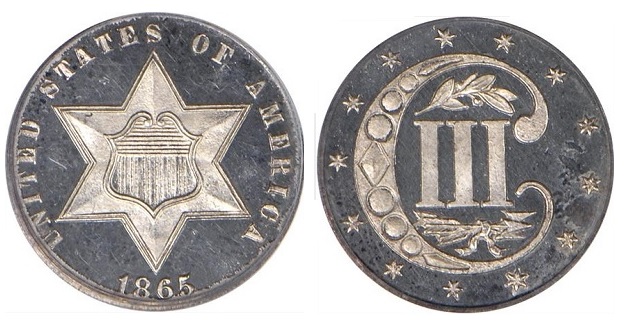
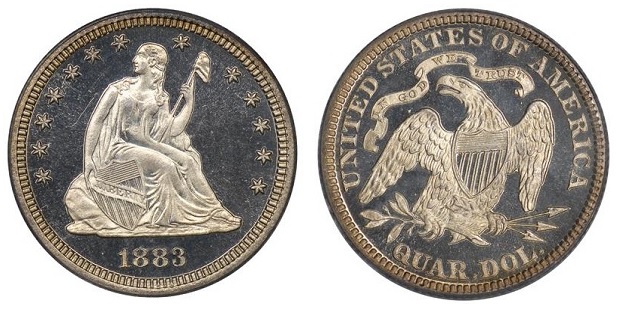

It's now time to have a gander at a few Deep Cameo examples. Most coins earning the DCAM qualifier are from our modern times. The further back in time you go, the tougher it is to find DCAM coins, but there are a few around. Here's one right here...

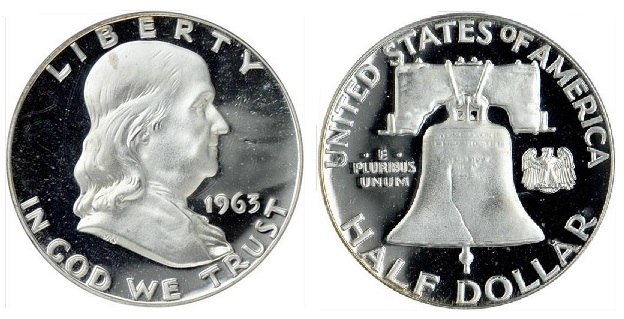
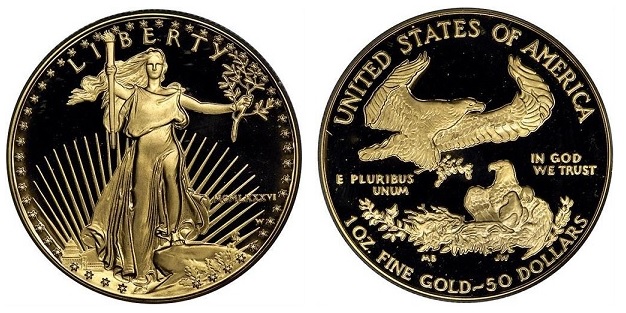
Proof Descriptions and Photos
Now that we’ve reviewed the basics of grading Proof coins, it’s time to roll out some descriptions and photo examples of the various grades on the Proof scale. Again, keep in mind small variances from one point grade to the next may be challenging to capture with a camera because of the reflective nature of Proof coins.
If you're on a desktop or laptop and you want to see a blow up of any of the pics below, hover over the pic and wait for the "Click for Enlarged Image" button to show. After studying the enlarged image, use the Back button to return to this page. For mobile device users, simply zoom in like you would for any image.
The grades, descriptions, and photos below provide a generalized view how Proof coins are evaluated, starting at virtually perfect MS-70, and moving down toward the MS-60 low end where the coin may be classified as a Proof, but with many blemishes and distractions. The grades and descriptions are taken directly from the ANA’s official grading standards publication.(6) All photos are courtesy of Stack's Bowers Galleries.
| Proof-70 | PR-70 | The perfect coin. Has a very attractive sharp strike and surface (mirror or other style) of the highest quality for the variety. No contact marks are visible under magnification. There are absolutely no hairlines, scuff marks, or defects. Eye appeal is attractive and outstanding. If copper, the coin is bright, with full original color or with natural light toning and with no flyspecks or spots.
|
| Proof-69 | PR-69 | Has a very attractive sharp strike and surface (mirror or other style) of the highest quality for the variety, with no more than two small non-detracting contact marks or flaws. No hairlines or scuff marks can be seen. Eye appeal is exceptional. If copper, the coin is bright, with full original color or with natural light toning and with no flyspecks or spots.
|
| Proof-68 | PR-68 | Has an attractive sharp strike and full mirror (or other style Proof) surface for the variety, with no more than four light scattered contact marks or flaws. No hairlines or scuff marks show. Eye appeal is exceptional. If copper, the coin has full original color or natural light toning with only a few flyspecks and no spots.
|
| Proof-67 | PR-67 | Has full mirror (or other style Proof) surface and sharp strike for the variety. May have three or four very small contact marks and one more noticeable but not detracting mark. A few hairlines may show under magnification, or one or two partially hidden scuff marks or flaws may be present. Eye appeal is exceptional. If copper, the coin has attractive color (mint red or blended to brown), only a few flyspecks, and no spots.
|
| Proof-66 | PR-66 | Has above average quality of strike and full mirror (or other style Proof) surface, with no more than two or three minor but noticeable contact marks. A few light hairlines show under magnification, or there may be one or two light scuff marks showing on frosted surfaces or in the field. The eye appeal is above average and very pleasing for the variety. If copper, the coin has attractive color (mint red or blended to brown), with only a few flyspecks and one or two tiny spots at most.
|
| Proof-65 | PR-65 | Shows an attractive high quality of mirror (or other style Proof) surface and strike for the date and mint. A few small scattered contact marks, or two larger marks, may be present, and hairlines may show under magnification. Noticeable light scuff marks may show on the high points of the design. Overall quality is above average and overall eye appeal is very pleasing. If copper, the coin has full luster with original or darkened color as designated. A few spots may be present, but they do not greatly detract from the eye appeal.
|
| Proof-64 | PR-64 | Has at least a typical mirror (or other style Proof) and strike for the issue. Several small contact marks in groups, as well as one or two moderately heavy marks, may be present. Hairlines will be visible under low magnification but will be light. Noticeable light scuff marks or defects might be seen within the design or in the field. Overall quality is attractive, with a pleasing eye appeal. Copper coins may be slightly dull. Color should be designated.
|
| Proof-63 | PR-63 | Mirrored (or other Proof style) fields may be slightly impaired. Numerous small contact marks and a few scattered heavy marks, may be seen. Hairlines are light but extensive and are visible without magnification. Several detracting scuff marks or defects may be present throughout the design or in the fields. The general quality is about average, but overall the coin is rather attractive. Copper pieces may be darkened or dull. Color should be designated. Most Proofs at the PR-63 level have problems.
|
| Proof-62 | PR-62 | An impaired or dull character may be evident in the Proof fields as well as on the higher areas. Clusters of small marks may be present throughout, with a few large marks or nicks in prime focal areas. Hairlines will be heavy and very noticeable. Large, unattractive scuff marks might be seen on major features. Overall eye appeal is barely acceptable for coins struck in precious metals. Copper coins will show a diminished color and tone and may be sub-par in appearance and appeal.
|
| Proof-61 | PR-61 | The mirror (or other Proof style) fields may be diminished or noticeably impaired, and the surface has clusters of large and small contact marks throughout. Hairlines dominate the fields, taking away from most of the original mirror (or related) characteristics. Scuff marks may show as unattractive patches on large areas or major features. The quality may be noticeably poor. Eye appeal is somewhat unattractive. Copper pieces will be generally dull, dark, and possibly spotted, perhaps from poor cleaning and attempts at improvement.
|
| Proof-60 | PR-60 | Unattractive, dull, or washed-out fields will exhibit little if any mirror characteristics. There may be many large detracting contact marks, or damage spots. There will be a heavy concentration of hairlines, possibly in combination with unattractive large areas of scuff marks. Rim nicks may be present, and eye appeal is very poor. Copper coins may be dark, dull, and spotted.
|
- Surface Preservation: No contact marks or hairlines show under magnification.
- Fields: Very attractive. Fully original.
- Eye Appeal: Outstanding.
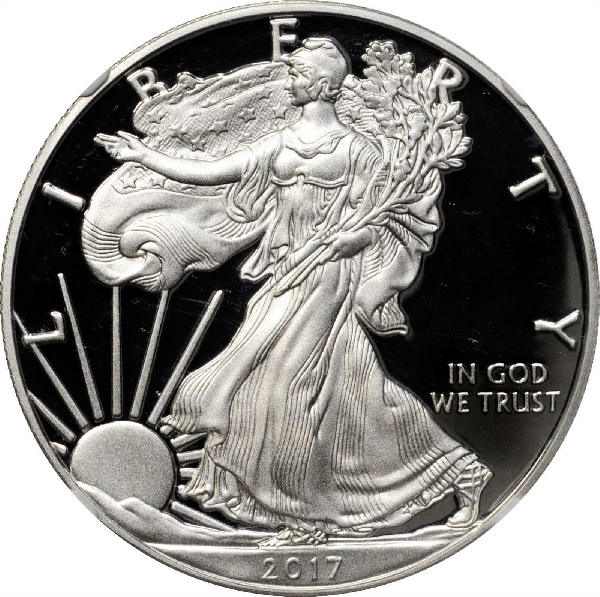
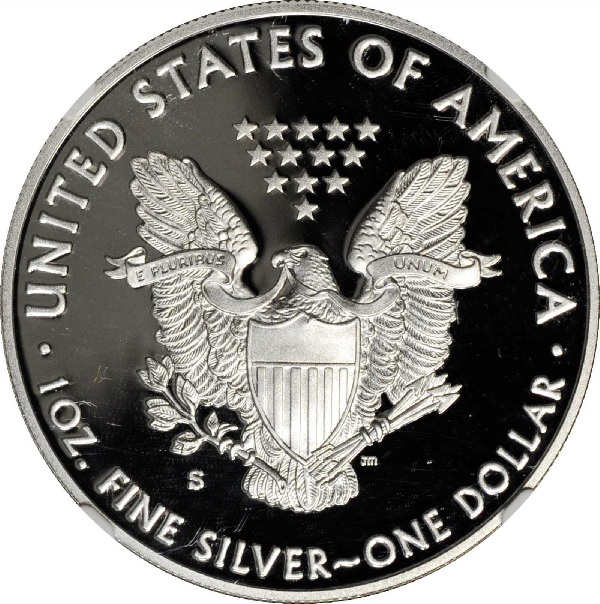
- Surface Preservation: One or two minuscule contact marks, none in prime focal area. No hairlines visible.
- Fields: Very attractive. Fully original.
- Eye Appeal: Exceptional.
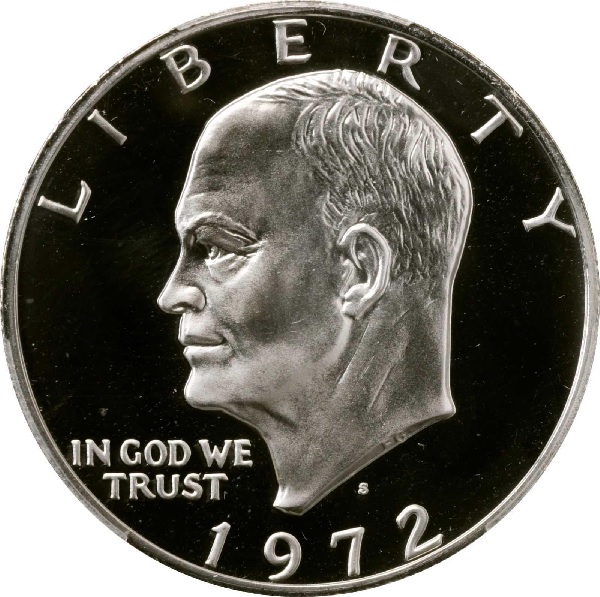
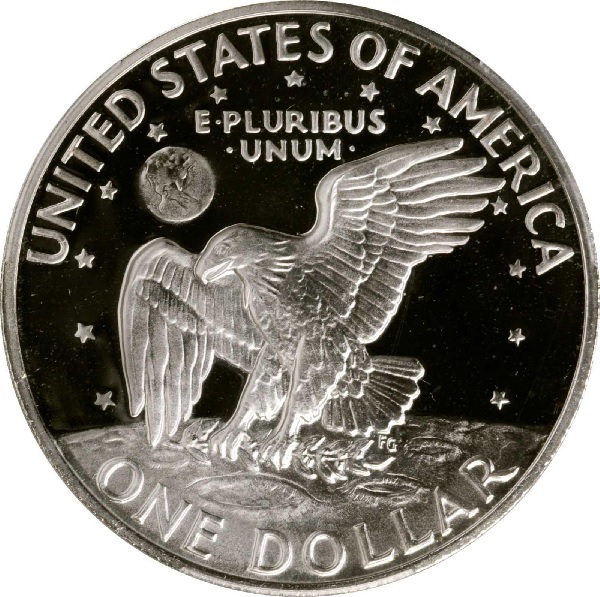
- Surface Preservation: Three or four minuscule contact marks, none in prime focal areas. No hairlines visible.
- Fields: Attractive. Fully original.
- Eye Appeal: Exceptional.
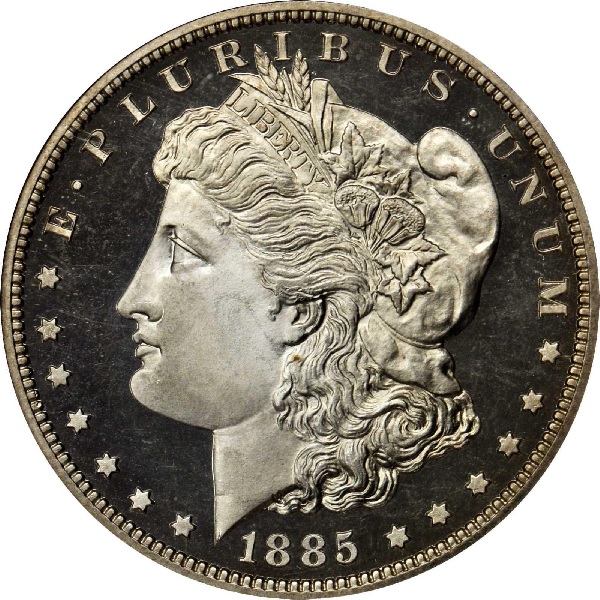
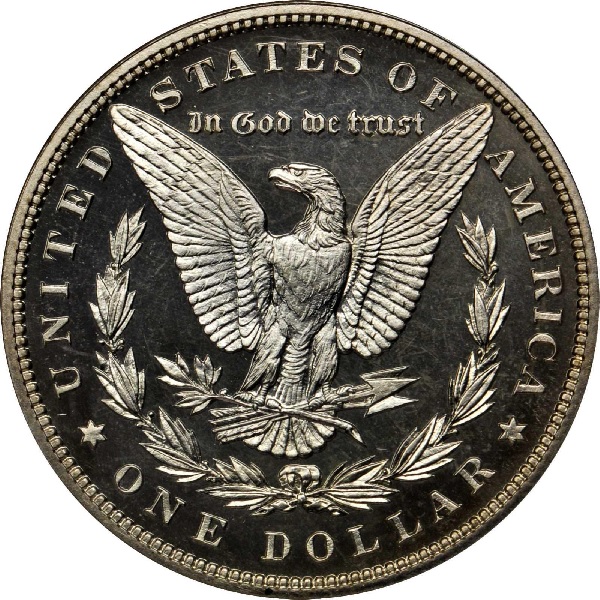
- Surface Preservation: Three or four minuscule contact marks, one or two may be in prime focal areas. No hairlines visible without magnification.
- Fields: Above average. Fully original.
- Eye Appeal: Exceptional.
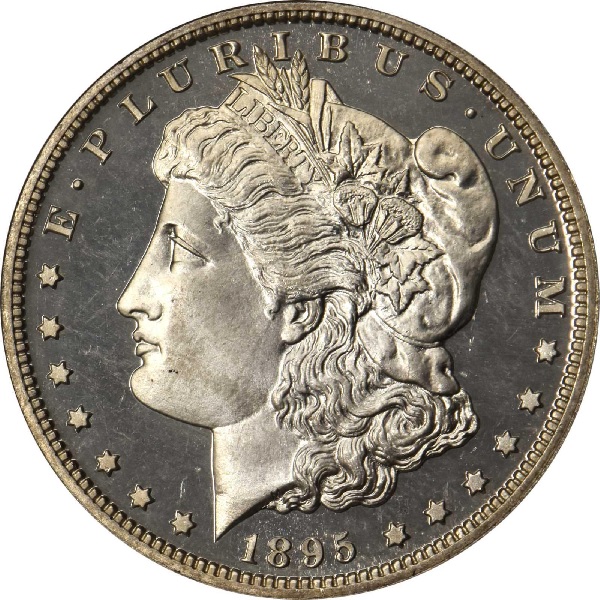
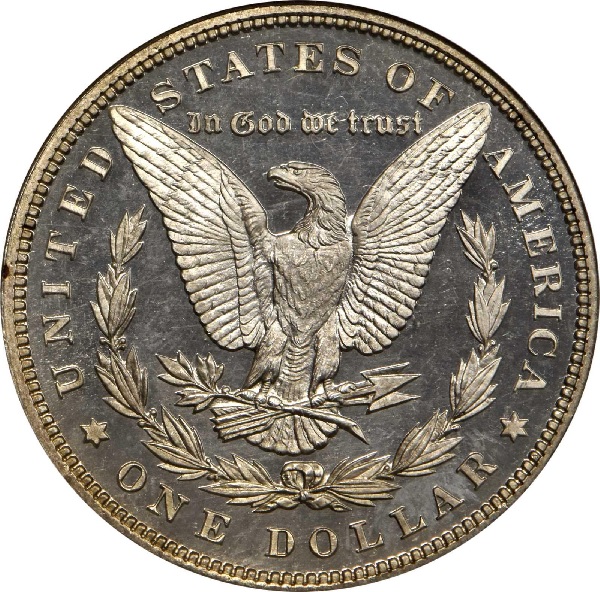
- Surface Preservation: Several small contact marks; a few may be in prime focal areas. No hairlines visible without magnification.
- Fields: Above average. Fully original.
- Eye Appeal: Above average.

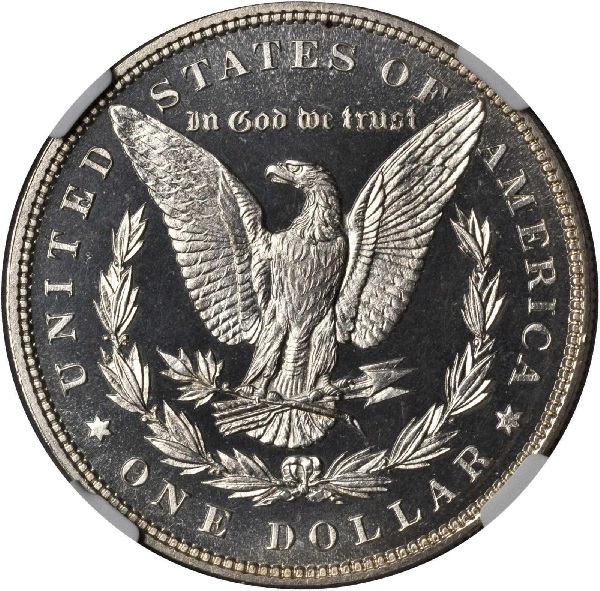
- Surface Preservation: Several light and scattered contact marks without major distracting marks in prime focal area. Light hairlines will be seen under low magnification.
- Fields: Above average. Fully original.
- Eye Appeal: Very pleasing for nickel, silver, silver, and gold coins. Varies for copper.
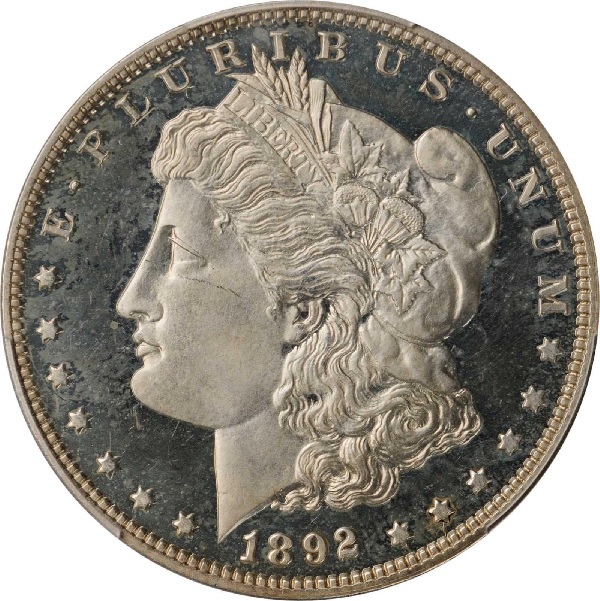
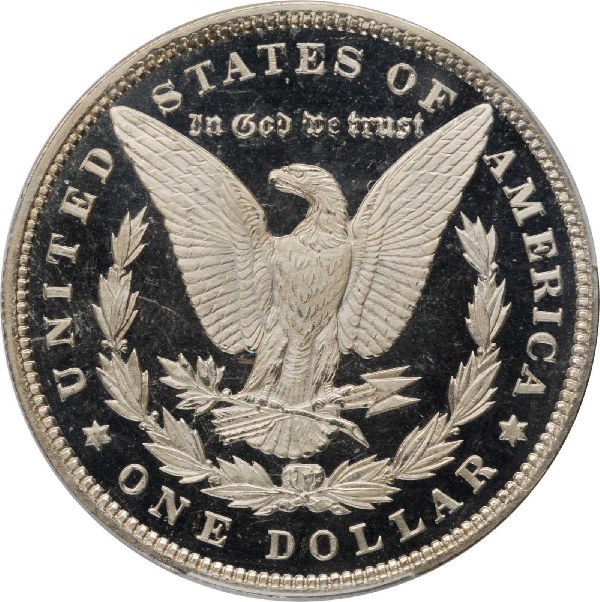
- Surface Preservation: May have light scattered contact marks; a few may be in prime focal areas. Light hairlines overall but with the mirror (or related Proof surface) retaining its integrity.
- Fields: Average. Fully original.
- Eye Appeal: Rather attractive for most issues. Copper coins can be an exception.
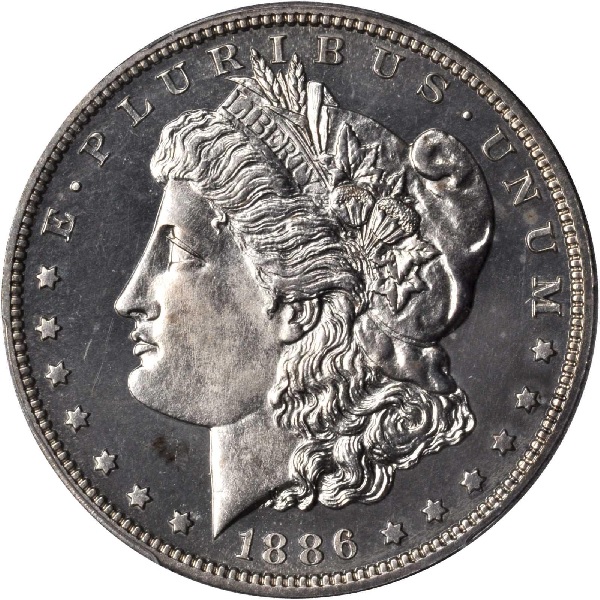
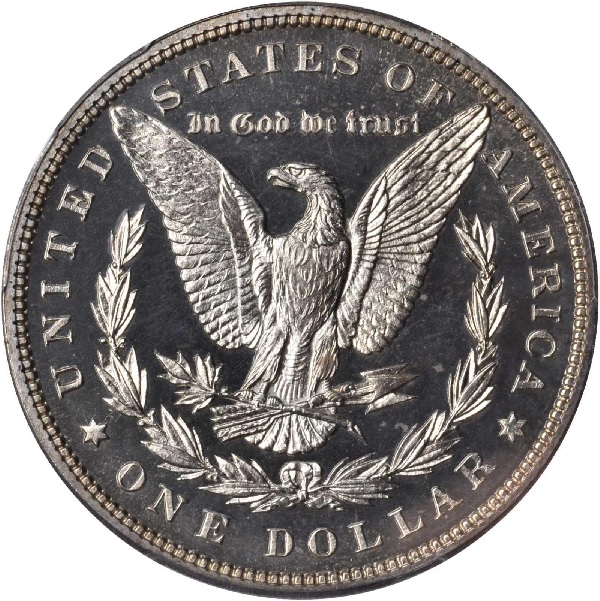
- Surface Preservation: May have distracting contact marks in prime focal areas. Will have extensive but light hairlines.
- Fields: May be original or slightly impaired.
- Eye Appeal: Rather attractive for silver and gold issues, not necessarily for copper and nickel coins.
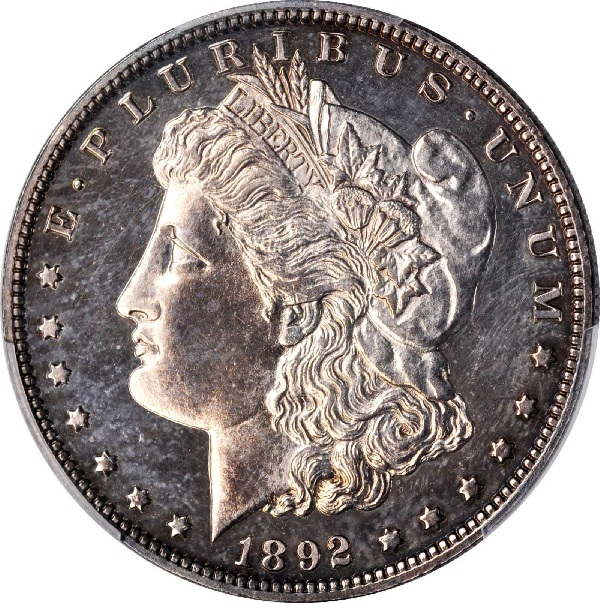
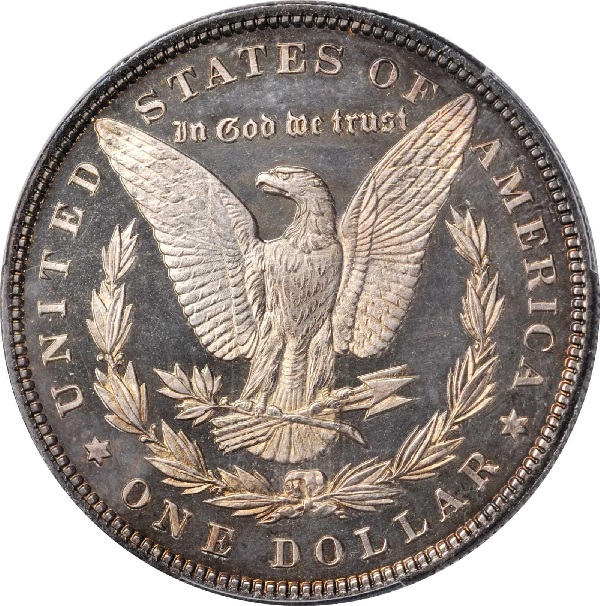
- Surface Preservation: May have distracting contact marks in prime focal areas and/or secondary areas. Fairly extensive hairlines overall.
- Fields: May be original or impaired, with the mirror surface dull or hazy.
- Eye Appeal: Varies widely for silver and gold issues, generally low for copper and nickel issues.
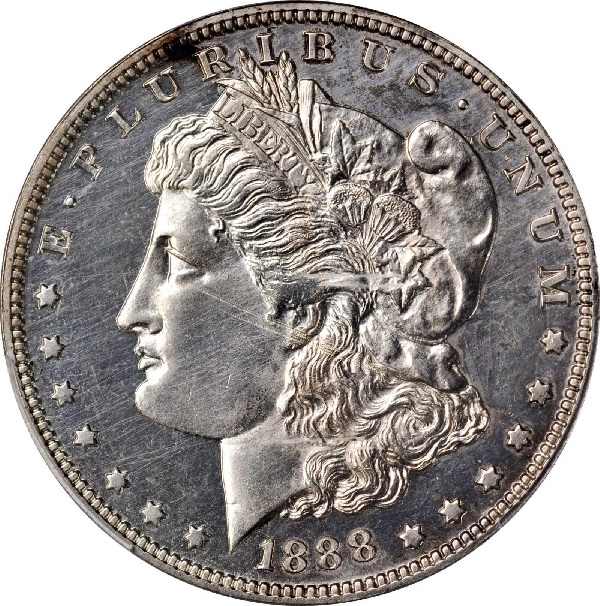
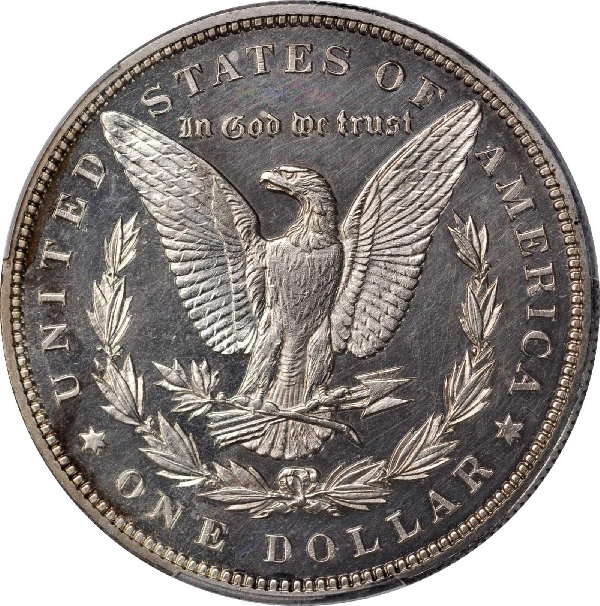
- Surface Preservation: May have a few heavy (or numerous light) contact marks in prime focal areas and/or secondary areas. Extensive hairlines.
- Fields: Usually dull or hazy, except for gold coins and cleaned silver coins, which can be bright.
- Eye Appeal: Unattractive.
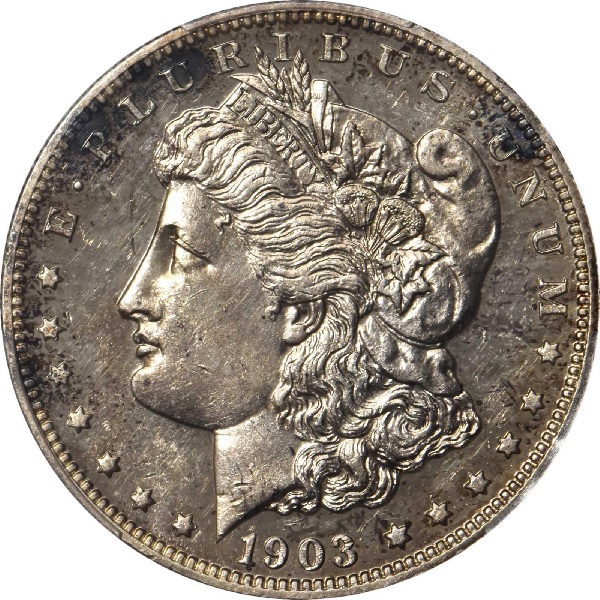
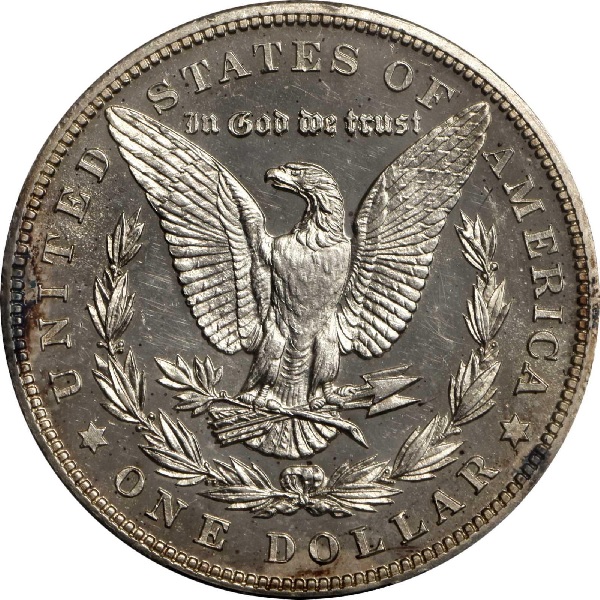
- Surface Preservation: May have heavy contact marks in all areas. Extensive and intensive hairlines.
- Fields: Usually dull, hazy, and unsatisfactory.
- Eye Appeal: Poor.
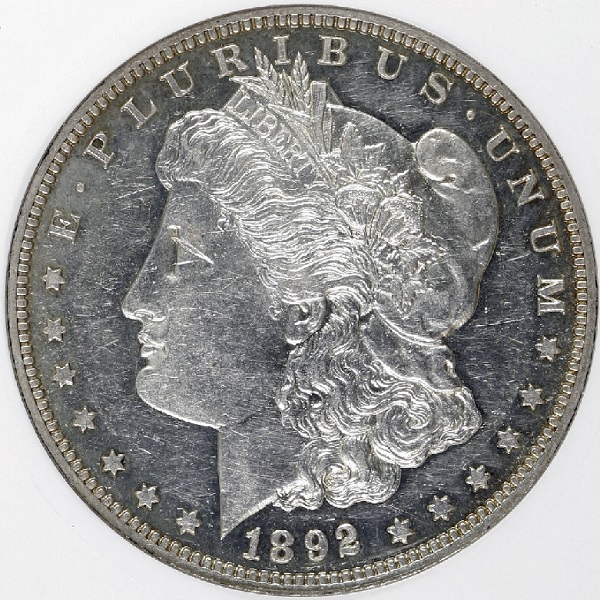
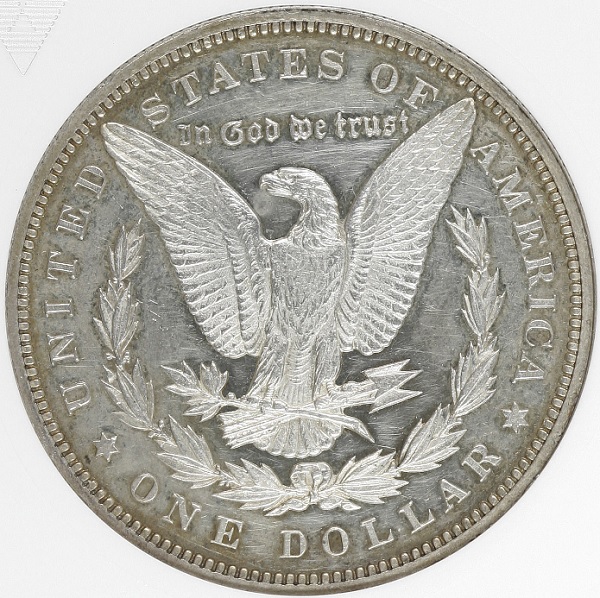
Quick Links to Other Coin Grading Chapters...
The next chapter in this section is Stars, "Green Beans", and "Plus" Grading.
Use the links directly below to navigate the "What is Coin Grading?" section:
- The Coin Grader Progression: From Boogeyman to Super Hero
- Grading Circulated Coins
- Mint State Coins
- Proof Coins (the current chapter)
- Stars, "Green Beans", and "Plus" Grading
- Grades as Reported on Rare Coins 101
- Suggested Coin Grading References
All the chapters referenced above are accessible from any other chapter in this section. Thus, no need to return to this Introductory page to link to other chapters.
Sources
1. American Numismatic Association. Fundamental Grading Theory.
2. American Numismatic Association. Technical Grading VS Market Grading.
3. Bressett, Kenneth, and Bowers, Q. David. The Official American Numismatic Association Grading Standards for United States Coins, 7th ed. Pelham, AL. Whitman Publishing, 2019.
4. Professional Coin Grading Service (PCGS).
5. Bressett and Bowers, ANA Grading Standards.
6. Bressett and Bowers, ANA Grading Standards.
As an Amazon Affiliate I earn from qualifying purchases, at no added cost to you. Thank you!
